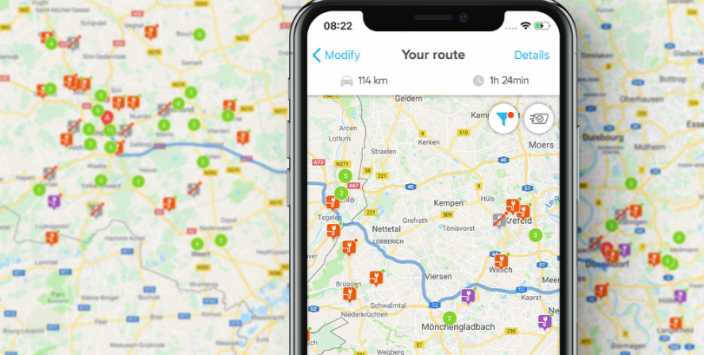Ericsson – Route Information from a Central Route Planner
We present a discussion of a problem posed by researchers of the company Ericsson, namely, to estimate the fraction of the road users in a road network that must participate in a central route planning scheme such that travel time predictions improve significantly. A road user who participates is expected to inform the central routeView problem details
Schlumberger – Displacement of a Viscoplastic Fluid in an Inclined Slot
The steady displacement of one viscoplastic fluid by another is studied in an inclined channel. The aim is a prediction of the finger width from simple balance laws. It is argued that no accurate prediction can be acquired from the far-field velocity profiles only, but that instead a calculation of the two-dimensional behavior near theView problem details
KPN Research – Cache as Ca$h Can
In this contribution, several caching strategies for the World Wide Web are studied. Special attention is paid to the so-called proxy placement, i.e. placing of caches on carefully selected nodes in the network near to the end-users. Using both a deterministic and a stochastic approach, algorithms are developed for calculating the allocation and sizes ofView problem details
NLR – Wind Tunnel Model Position and Orientation
In this contribution, the determination of the position of moving and deforming objects in wind tunnels from CCD camera information is studied. An analytical approach is discussed which solves the problem directly from manipulating nonlinear distance formulae. Also, a least-squares approach is given, which is most convenient to implement from a numerical point of view.
Trespa International – Modelling of moisture induced warp in panels containing wood fibres
In this contribution the deformation of panels, used a.o. in furniture, is discussed in relation to the moisture content. It is shown how the variations in temperature, water and resin concentrations during the pressing process of the panels can be modelled. The panel deformation is modelled using linear elasticity theory. An explicit analytical expression forView problem details
Philips NatLab – On Compact Models for High-voltage MOS Devices
Fast evaluation of integrated circuits(ICs) requires the availability of so-called compact models, i.e. simple-to-evaluate relations between the voltages and the currents in the IC-components. In this paper, the compact model for a particular IC-part, the LMDOS device, is studied. This model consists of coupled submodels, each of which describes a separate part of the LDMOSView problem details
Akzo Nobel – Color Matching
We consider the problem of creating paint of a certain target color by mixing colorants. Although a large number of colorants is available, in practice it is only allowed to use a limited number. We focus on the problem of selecting the right subset of colorants.





